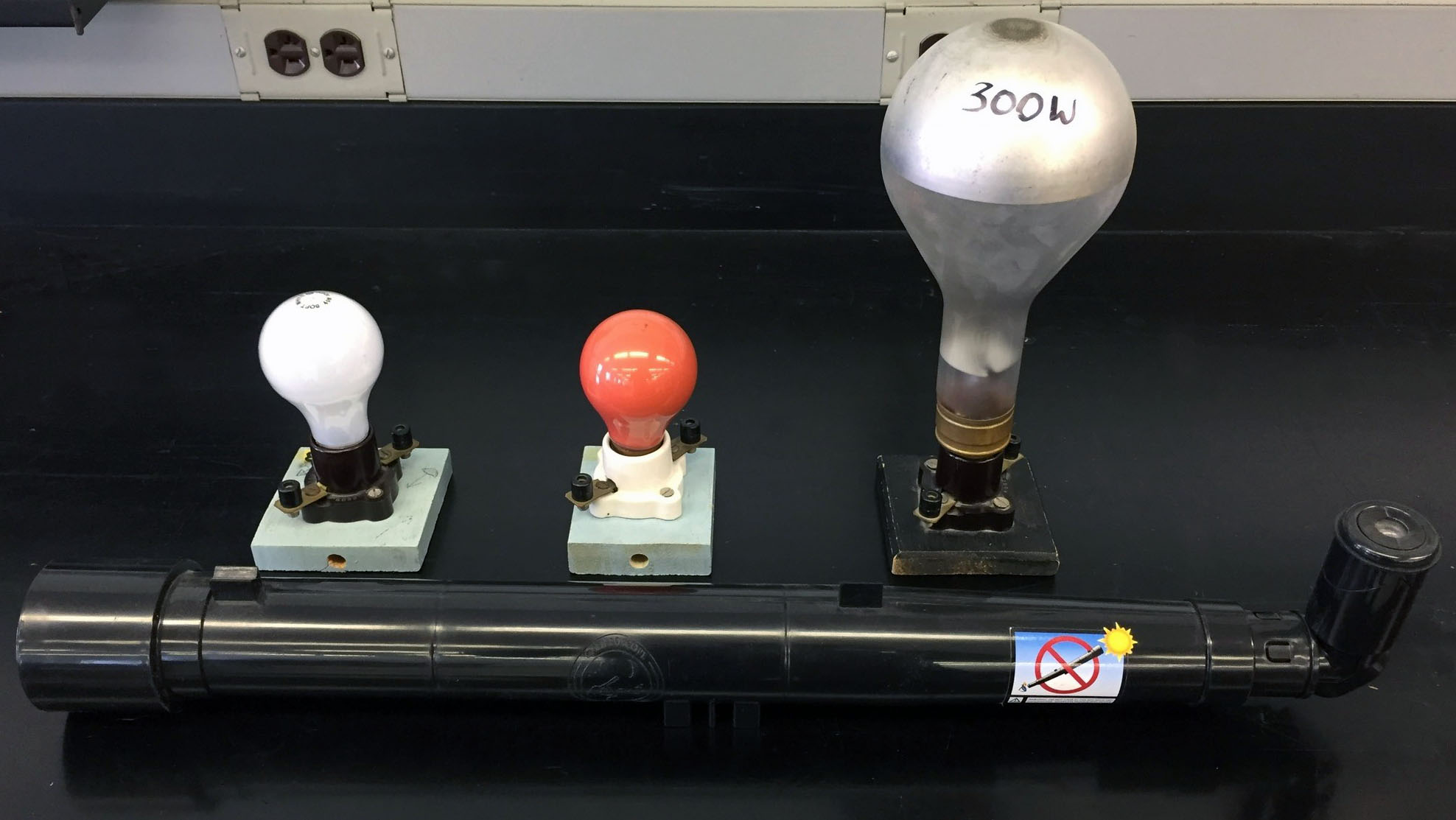Students will realize that the light we see from a great distance gives us an image of the object in the distant past.
This bit of play-acting is to be performed after the Lecture-Tutorial "Looking at Distant Objects" (from Lecture-Tutorials for Introductory Astronomy by Prather, Slater, Adams and Brissenden.)
- You'll need four volunteers for this exercise:
- Earth (holding Galileoscope)
- Young Photon (holding white bulb)
- Old (Death) Photon (holding red bulb)
- Star (holding large bulb - if possible, pick a football or hockey player); tell the class they'll learn later why this choice is hilarious
- Explain that the observer is on Earth, and the photons represent an image of the star that travels 100 million Lyr from the star to the observer
- Write along the entire length of the board a line indicating 100 million Lyr, with 'Earth' on the left and 'Star' on the right. Mark the half-way point with 50 million Lyr
- Have Earth student stand on the left side, and other three on the right:

- Have the Young Photon (carrying white light bulb) walk slowly toward Earth. Ask the class "Can the Earth observer see the star yet?" (No, not until the photon reaches Earth). "How fast is the Young Photon moving?" (Speed of Light). "How long will it take a photon of light to travel from the star to the Earth?" (100 million years). Have Young Photon return to the Star
- The Young Photon leaves when the star is 10 million years old (matching the age in the Lecture-Tutorial problem). Have Young Photon walk slowly to Earth. As they're walking ask "How old is that image of the star?" (10 million years old). How long will it take that photon to travel to Earth? (100 million years). When the Young Photon reaches Earth, ask "What age of the star does the observer see?" (10 million years old)
- Young Photon returns again to Star, then slowly starts walking to Earth. Have the class shout out "Stop" at the position after the Young Photon travels for 40 million years; the Young Photon stops, and this is when the Star dies. Ask the Star to die explosively (but don't break the bulb!)
- At this point, the Old Photon will leave the Star (containing the star's death image). Ask the class how both photons should proceed towards Earth (walk in unison – below)

- Ask students: How fast is Young Photon moving? (SOL). Old Photon? (SOL). How much time is between Young and Old Photon? (40 million years)
- When Young Photon hits Earth, ask class: "What is the age of the star?" (10 million years). "When will we see the star die?" (In 40 million years). "How long ago did the star die?" (60 million years ago)

NMSR, and Jeff's office.
